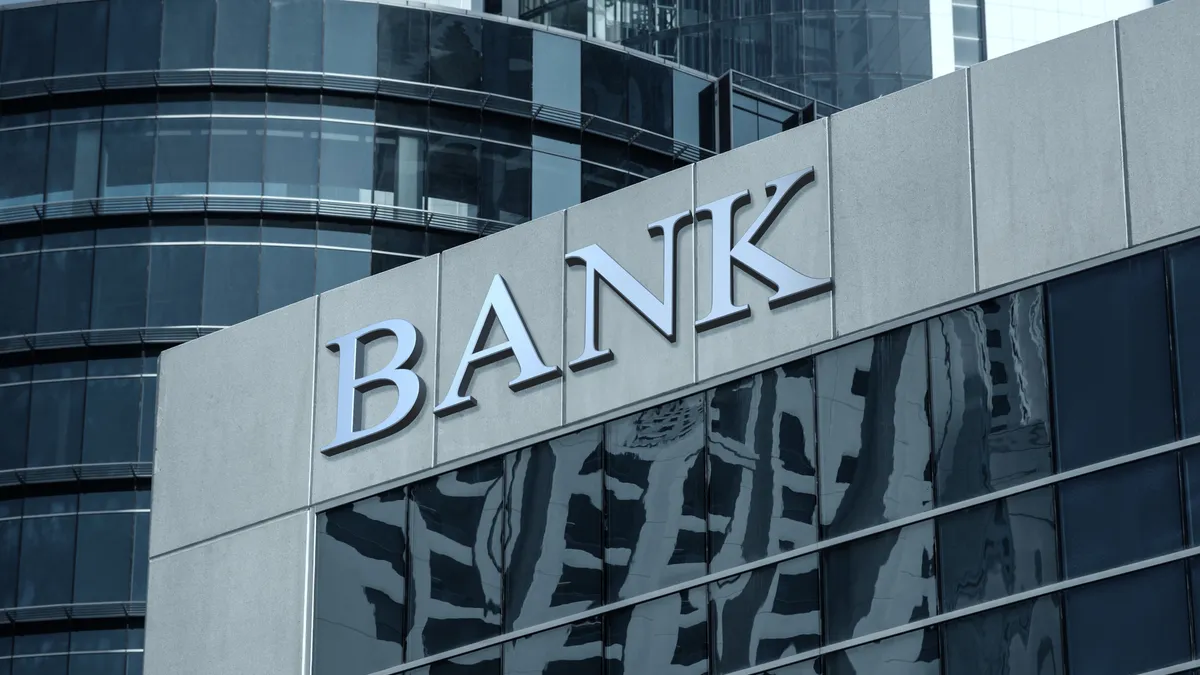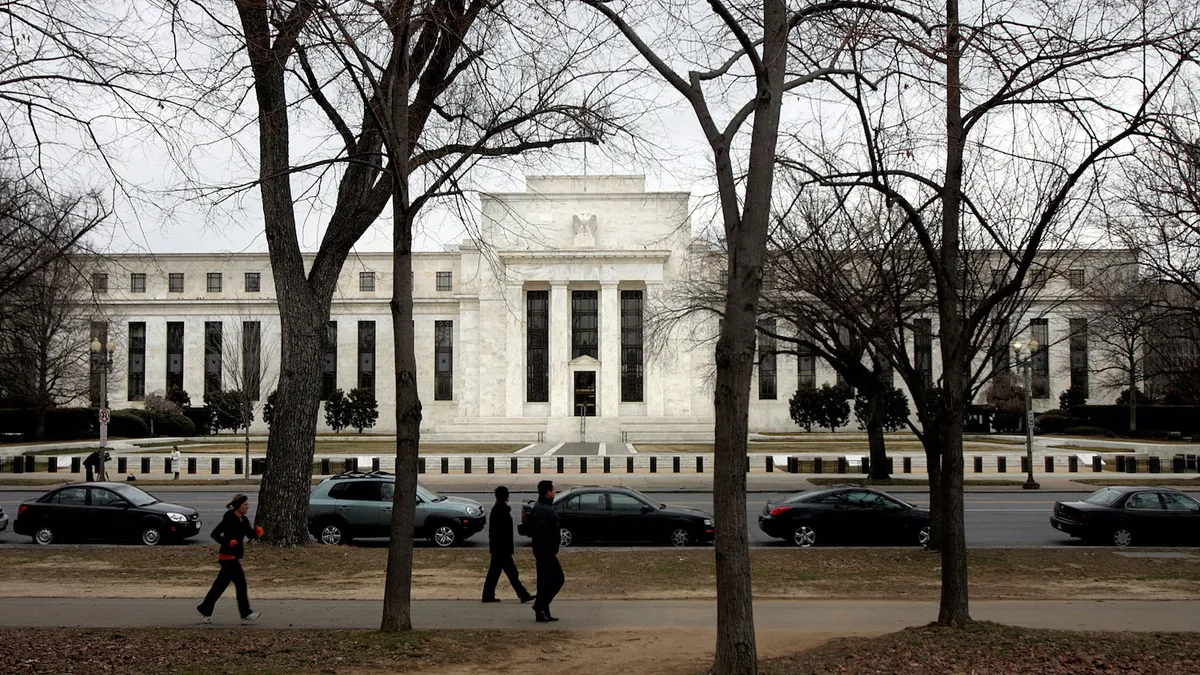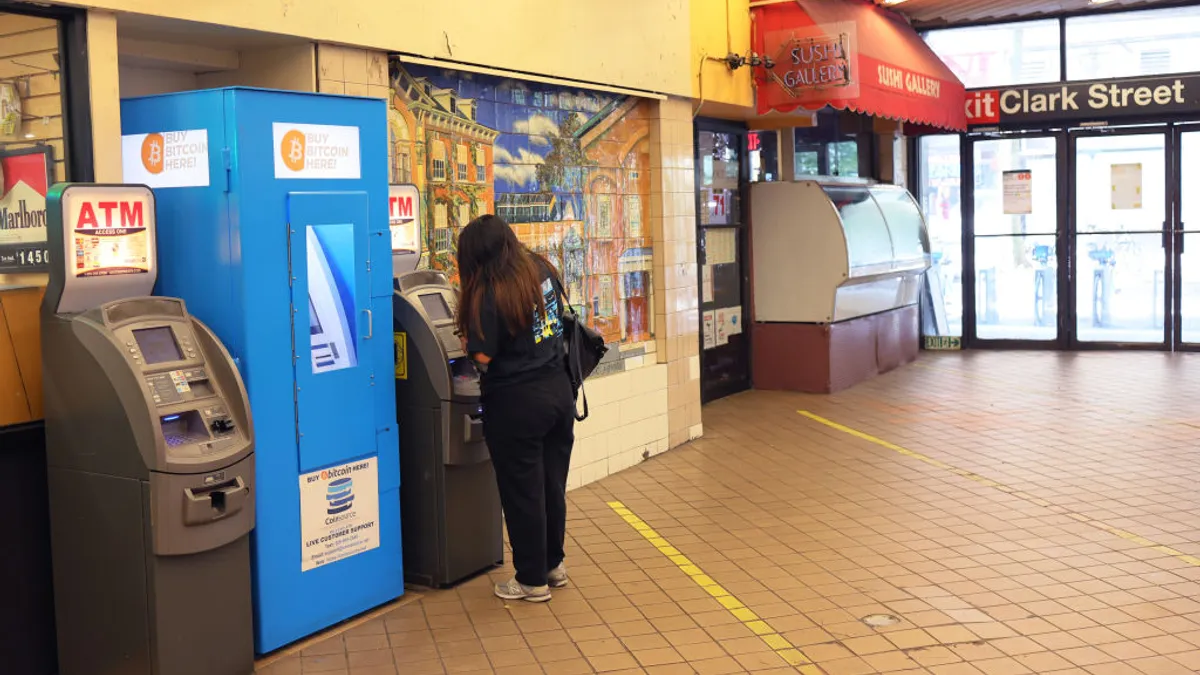A new year, or even decade, can stand as an easy marker to open a fresh chapter in business, but some issues will enter the conversation again and again. Banking Dive has identified four trends we expect to resurface throughout 2020.
Climate dominoes
2020 may demonstrate the seriousness of banks’ commitment to environmentally and socially responsible lending. Banks arguably took a herd-mentality approach last year to lending on certain issues. As tension over immigration simmered in the U.S., one bank after another — JPMorgan Chase, then Bank of America, then SunTrust, then Barclays — pulled out of funding the private-prison industry. Then it was gun sales. But climate change remained the elephant — er, let’s pick a more timely vulnerable species: koala — in the room.
Forward-thinking fintechs such as Stripe committed to carbon capture. But how is that measured?
Socially responsible lending increased 40% last year, compared with 2018, S&P Global Ratings reported. But the credit rating provider also warned banks need to set clear targets under a set of United Nations-backed responsible banking principles, to which 130 financial institutions agreed in September.
Goldman Sachs raised the bar in December, seeking to take on $750 billion in loans, underwriting, advisory services and investments geared toward renewable energy, sustainable transportation, affordable education and other areas, the bank said. "Companies have traditionally treated sustainability as a peripheral issue," CEO David Solomon wrote in an op-ed in the Financial Times. "We don’t have the luxury of that limited perspective any more."
And the bank has followed through to begin the new year, agreeing Monday to buy $200 million in loans from Loanpal, which provides financing for rooftop solar panels.
Private-equity giant BlackRock this week promised to divest $500 million from coal-related businesses, calling on “every company, not just energy firms, to rethink their carbon footprints.”
Buy-in from heavyweights like Goldman and BlackRock — specifically, with target figures attached — may be crucial for climate-related lending to spur a domino effect similar to last year’s exodus from private prisons.
M&A for mid-size and community banks
The U.S. banking industry saw 269 mergers in 2019, up from 264 deals in 2018 and matching 2017’s total, according to S&P Global Market Intelligence data.
BB&T’s $28 billion acquisition of SunTrust made headlines throughout the year, as did the ongoing trend of credit unions buying community banks.
Brian Klock, an analyst with Keefe Bruyette & Woods, told S&P Global he expects more regional and community banks to merge in 2020, including mergers of equals between banks with $20 billion to $50 billion in assets.
Global consulting firm Accenture also predicted a continuation of M&A among midsize banks in 2020, as smaller institutions seek ways to scale and compete with larger banks.
“In many markets, tier 2 banks have struggled to grow, with revenue leaking to both new entrants and industry titans, so they find themselves stuck in the middle, with neither scale nor an innovative business model,” wrote Alan McIntyre, senior managing director of banking at Accenture. “If mid-sized banks can’t rely on digital leadership to reduce costs and improve profitability, many will turn to M&A as a tried-and-tested way to reduce their ‘run the bank’ costs, either through whole bank deals or selective business acquisitions.”
But a potential decrease in certain pressures that lead small banks to pursue these deals could cause the M&A landscape to level off.
“Banks are sold, not bought, so it's largely decisions of smaller institutions deciding that now is the time to sell," Robert Klingler, a partner at Bryan Cave Leighton Paisner who specializes in banking, told S&P Global.
Shareholder demand for liquidity, issues with management succession and the need to grow could be abating among some smaller banks as consolidation shrinks the overall number of financial institutions, Klingler said.
"Those demographic pressures are going to continue, over time, to reduce the number of M&A transactions," he said.
2020 is also an election year, and banks could be waiting to act until the outcome is known.
"We could certainly see a lull in the second and third quarter" and a "flurry" of deals, depending on who is elected, Klingler said.
Credit unions announced 16 bank acquisitions in 2019, nearly doubling the nine deals announced in 2018, according to American Banker.
John Stockamp, a director in the financial services practice at consulting firm West Monroe Partners, told S&P Global in September that he doesn’t anticipate the trend will slow down. "There's still a lot of financial institutions out there," he said. "It's kind of been the story since the last recession.”
Banking and big tech partnerships
Bank partnerships with fintech companies are nothing new. But if 2019 is any indication, Silicon Valley giants could continue to make major moves in the financial services space in 2020.
Apple and Goldman Sachs last year debuted the Apple Card, which Goldman CEO David Solomon called the "most successful credit card launch ever," and Google announced plans to co-brand a checking account through partnerships with Citi and Stanford Federal Credit Union.
But as more banks decide to enter into these kinds of partnerships, they’ll need to answer some questions about how they want to position themselves in these deals.
"It becomes a challenge for the bank. Do you just become the dumb pipes in the background and people just remember Apple as the brand?" Mark Flamme, head of digital for financial services at turnaround consulting firm AlixPartners, told Banking Dive in November. "How does a bank remain relevant?"
Facebook also made a major play in the payments space, launching Facebook Pay on Facebook and Messenger in the U.S. in November. In a blog post, the company said it plans to eventually launch the service on Instagram and WhatsApp.
Despite plans to launch in 2020, the social media giant’s cryptocurrency project, Libra, is expected to continue to receive pushback from lawmakers on both sides of the Atlantic this year.
PayPal, EBay, Stripe, Mastercard and Visa dropped out of the Libra Association in October, following scrutiny over the project’s risks with regard to money laundering and terrorism financing.
Challengers' testing grounds abroad
All eyes in 2019 may have been on Europe, home to several challenger banks that made inroads in the U.S. market. The U.K.’s Monzo made itself available in the U.S. in June. Germany’s N26 rolled out mobile banking to an apparently 100,000-strong waitlist in August. London-based online money transfer service TransferWise broached the U.S. banking market in September. And British digital app Revolut was set to begin issuing payment cards to U.S. customers by year’s end.
Banks may have to look further east in 2020, where Singapore appears to be ground zero for fintechs entering the banking space. Twenty-one groups filed applications with the Monetary Authority of Singapore for digital banking licenses ahead of a Dec. 31 deadline. Those groups include computer gaming company Razer and a partnership between telecom provider Singtel and ride-sharing app Grab. Grab’s prospects may be of particular interest to another ride-sharing company flirting with the banking space: Uber.
Challengers elsewhere in Asia have looked to use high yields to sway potential new customers. Hong Kong’s digital-only ZA Bank began a trial run offering select customers 6% back on deposits. That’s twice the rate that HSBC and Standard Chartered offer, Bloomberg reported. Some bank executives seem certain the rates won’t last. (“This is more of a gimmick, which shouldn’t become a norm,” said Terry Siu, treasurer at CMB Wing Lung Bank.) But high-yield-offering U.S. fintechs such as Betterment, Wealthfront and Robinhood — as well as digital bank Green Dot — may be watching to see how ZA’s experiment fares.























